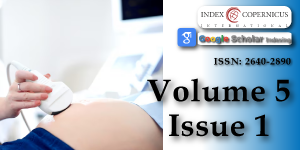Predictors of positive treatment response to PTNS in women with overactive bladder
Main Article Content
Article Details
Copyright (c) 2022 Rachaneni S, et al.

This work is licensed under a Creative Commons Attribution 4.0 International License.
de Groat WC, Griffiths D, Yoshimura N: Neural control of the lower urinary tract. Comprehensive Physiology. 2015; 5: 327-396. PubMed: https://pubmed.ncbi.nlm.nih.gov/25589273/
Hubscher CH, Gupta DS, Brink TS. Convergence and cross talk in urogenital neural circuitries. J Neurophysiol. 2013; 110: 1997-2005. PubMed: https://pubmed.ncbi.nlm.nih.gov/23926033/
Klingler HC, Pycha A, Schmidbauer J, Marberger M. Use of peripheral neuromodulation of the S3 region for treatment of detrusor overactivity: a urodynamic-based study. Urology. 2000; 56: 766-771. PubMed: https://pubmed.ncbi.nlm.nih.gov/11068296/
Vandoninck V, van Balken MR, Finazzi Agrò E, Petta F, Micali F, et al. Percutaneous tibial nerve stimulation in the treatment of overactive bladder: urodynamic data. Neurourol Urodyn. 2003; 22: 227-232. PubMed: https://pubmed.ncbi.nlm.nih.gov/12707873/
Wang M, Jian Z, Ma Y, Jin X, Li H, et al. Percutaneous tibial nerve stimulation for overactive bladder syndrome: a systematic review and meta-analysis. Int Urogynecol J. 2020; 31: 2457-2471. PubMed: https://pubmed.ncbi.nlm.nih.gov/32681345/
Del Río-Gonzalez S, Aragon IM, Castillo E, Milla-España F, Galacho A, et al. Percutaneous Tibial Nerve Stimulation Therapy for Overactive Bladder Syndrome: Clinical Effectiveness, Urodynamic, and Durability Evaluation. Urology. 2017; 108: 52-58. PubMed: https://pubmed.ncbi.nlm.nih.gov/28687483/
Rostaminia G, Chang C, Pincus JB, Sand PK, Goldberg RP. Predictors of successful percutaneous tibial nerve stimulation (PTNS) in the treatment of overactive bladder syndrome. Int Urogynecol J. 2019; 30: 1735-1745. PubMed: https://pubmed.ncbi.nlm.nih.gov/30498931/
van Balken MR, Vergunst H, Bemelmans BL. Prognostic factors for successful percutaneous tibial nerve stimulation. Eur Urol. 2006; 49: 360-365. PubMed: https://pubmed.ncbi.nlm.nih.gov/16359781/
Pincus J, Rostaminia G, Chang C, Gafni-Kane A, Goldberg RP. Factors associated with overactive bladder symptom improvement after 1 year of monthly percutaneous tibial nerve stimulation therapy. Neurourol Urodynamics. 2019; 38: 1676-1684. PubMed: https://pubmed.ncbi.nlm.nih.gov/31107570/
Iyer S, Laus K, Rugino A, Botros C, Lozo S, et al. Subjective and objective responses to PTNS and predictors for success: a retrospective cohort study of percutaneous tibial nerve stimulation for overactive bladder. Int Urogynecol J. 2019; 30: 1253-1259. PubMed: https://pubmed.ncbi.nlm.nih.gov/30467763/
Kopcsay KS, Marczak TD, Jeppson PC, Cameron AP, Khavari R, et al. Treatment of refractory overactive bladder with OnabotulinumtoxinA vs PTNS: TROOP trial. Int Urogynecol J. 2022. PubMed: https://pubmed.ncbi.nlm.nih.gov/34993598/

